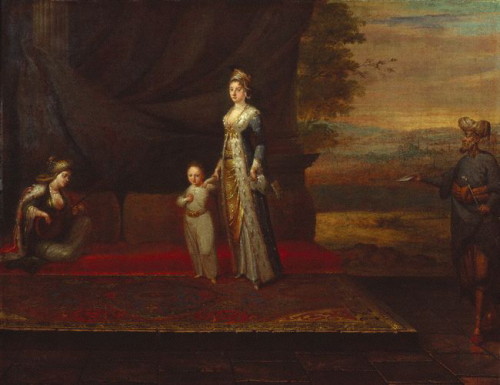Hester was the first child born to the Earl of Stanhope. Her mother had died after giving birth to her 3rd daughter, leaving three young girls and a devastated, and unfatherly husband. Life in the Stanhope house was not the ideal situation. The earl, needing an heir, quickly remarried a woman who could care less about the daughters from his first marriage. The earl himself was reportedly unkind to his children and busied himself in his work. It's no wonder Hester grew up to be a rebellious teenager. By the age of twenty she managed to get herself kicked out of her house for her various rebellions. Hester had nowhere to go - except of course,
Uncle Pitt's House.
Yes, the Prime Minister just happened to be Hester's uncle by way of her mother. You would think the rebellious and striking young lady and the stuffy politician may not have been the best combination but the odd couple actually worked. Pitt was notoriously asexual and never had a wife or children but Hester's presence brought out out his fatherly side and he loved having Hester around. Hester, in turn, loved living with her uncle and her intelligence and wit made her a welcome asset to his home. She soon proved herself to be a great political hostess, much like Georgiana and the
Duchess of Gordon. This new position also allowed her to meet many new people.
One of those people just happened to be Granville Leveson-Gower,
Harriet's longtime beau. The dashing Tory was flirtatious and Hester fell hard for him. She had been courted by many of her uncle's friends but Granville was a hard man to resist, with his blue eyes and dark hair. Unfortunately, Granville was just flirting and had no serious intentions for Hester; yes she had great political connections, but what he needed was a wife with money. Hester flew into a rage at his rejection. As Granville was preparing to depart for his new ambassadorial mission in Russia Hest sent him a frantic letter threatening suicide if he refused to marry her. Granville, did was any typical man would: he showed the letter to his girlfriend (Harriet) and left anyway. Hester promptly poisoned herself but survived. Forever afterward she despised Harriet and had no problem showing it. Like any rejected, love-sick woman, she wrote twenty page letters to Granville telling him how horrible he

was and when that didn't seem to get his attention she claimed she was pregnant...to just about everyone.
But more pressing matters were soon to distract Hester from heartbreak. Pitt was ill. Hester tended to him night and day but it was becoming obvious that the former prime minister was dying. After Pitt's death, Hester was once again homeless and bored. A series of illness and lousy men caused her to make the rash decision to leave England and travel through exotic lands.
Hester's entourage consisted of her doctor (who was secretly in love with her), her faithful maid, and 20 year old Michael Bruce who later became her lover. Many
adventures met our heroine in these eastern lands and news would constantly reach England of Lady Stanhope's scandalous escapades. Once, a shipwreck in Rhodes left the party without any clothes so they were forced to adopt Turkish garb. Hester chose to wear men's clothing since she refused to veil her face.
Feisty! Eventually she stopped traveling and settled down to live in Turkey with her party. Vistitors from Europe began to visit the eastern lands knowing they could safely stay with Lady Stanhope. Life was good.
Unfortunately good things cannot last forever. First, Michael returned to England to help his dying father, promising daily letters and money. Neither arrived. Next her faithful maid died and her doctor returned to England to settle down and have a family. A life of isolation brought Hester back into the same state of crazy that Granville put her in years earlier. She became eccentric like a female
Howard Hughes and plunged into debt. Guests were only allowed to see her hands and face, she shaved her head and wore a turban, she only appeared at night, Hester had finally lost it. While her servants stole her possessions from under her nose, Hester became ill and died penniless and alone in 1839.













